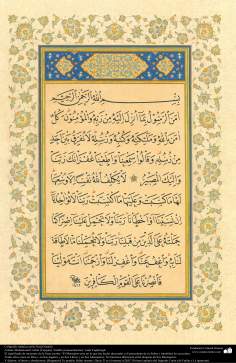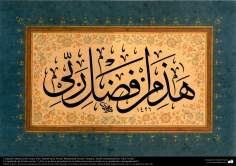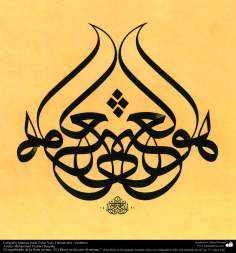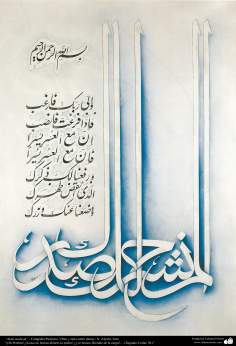-
Islamic Art
-
Arquitecture
-
Islamic Arquitecture
- Arte & Islamic Architecture in painting
- Islamic mosaics and decorative tile (Kashi Kari)
- Islamic Mogarabas (Moqarnas Kari)
- Arte con espejos incrustados (aine kari)
- City of Isfahan - Iran
- City of Mashhad - Iran
- City of Shiraz - Iran
- From other cities of Iran
- Mecca and Medina – Saudi Arabia
- City of Agra - India
- Persian Preislamic Arquitecture
-
Islamic Arquitecture
-
Persian Miniature
- Miniatures by Prof. M. Farshchian
- miniatures by Hayy Agha Emami
- Miniatures by Prof. Husein Behzad
- Miniatures by Professor M. Mehregan
- Miniatures by different artists
- Miniatures of the Book “Muraqqa-e-Golshan
- Miniatures of books of Poet Sadi, “Bustan”, “Golestan” and “Colections”
- Miniature of the books of Poet Nezami Ganjavi
- Miniatures of different books
- Miniatures of the Book “Zafar Name Teimuri”
- Miniatures of different editions of Shahname by Ferdowsi
- Miniature in Mural
- Tazhib (Ornamentation of valuables pages and texts)
-
Islamic Calligraphy
- Kufic Calligraphy – Kufic Style
- Islamic Calligraphy – “Diwani” Style
- Islamic Calligraphy – “Naskh” Style
- Islamic Calligraphy – “Nastaliq” style
- Islamic Calligraphy – “Muhaqqeq” and “Roga” Styles
- Islamic Calligraphy “Zuluz” Style
- Islamic Calligraphy – “Tawqi” style
- Calligraphy of Bismillah
- Quranic Calligraphy
- Illustrative Calligraphy
- Antique editions of the Holy Quran from early times to XIII hiyri (XIX d.C).
-
Handicrafts
- Handicrafts – traditional blocking (stamping) (Chape Qalamkar)
- Handicraft – Marquetry and Decoration of objects (Jatam Kari)
- Handicraft – Enamel (Mina Kari)
- Handicraft – Textile Art – Persian Carpets
- Persian Handicraft – Bone Painting
- Handicraft – Engraved in metal (Qalam Zani)
- Handicraft – Taracea (Marquetry)
- Weapons and decorated enamelware
- Paintings
- Islamic Pottery- Islamic ceramics
-
Arquitecture
- Muslim Woman
- Holy Places of Islam
-
Poster
- Caricature
خوشنويسي بارزترين هنر اسلامي است. خوشنويسي را ميتوان شاخصترين هنر در پهنه سرزمينهاي اسلامي دانست و آن را به مثابه زبان هنري مشترک براي تمامي مسلمانان تلقي کرد.
هنر خوشنويسي همواره براي مسلمانان اهميتي خاص داشتهاست، زيرا در اصل آن را هنر تجسم کلام وحی ميدانستهاند. در سرزمينهاي اسلامي خط زيبا را نه فقط در نگارش قرآن، بلکه در اغلب هنرها بکار ميبردند. در هنر اسلامي تزئينات خطي و خوشنويسي در همه جا به چشم ميخورد و به تدريج و با ورود اقوام مختلف با فرهنگها و خط هاي متفاوت، تنوع مناسبي در تعداد و انواع خط قرآني داده شد. امروزه قرآن کريم باخطوط «نسخ»، «نستعليق»، «ثلث»، «ريحان»، «معلي» و… به نگارش در مي آيد
این عکس نمونه ای از خوشنویسی قرآن کریم در دوره معاصر می باشد که شما میتوانید با مراجعه به اینجا عکس های بیشتری از این هنر اسلامی را ببینید.












